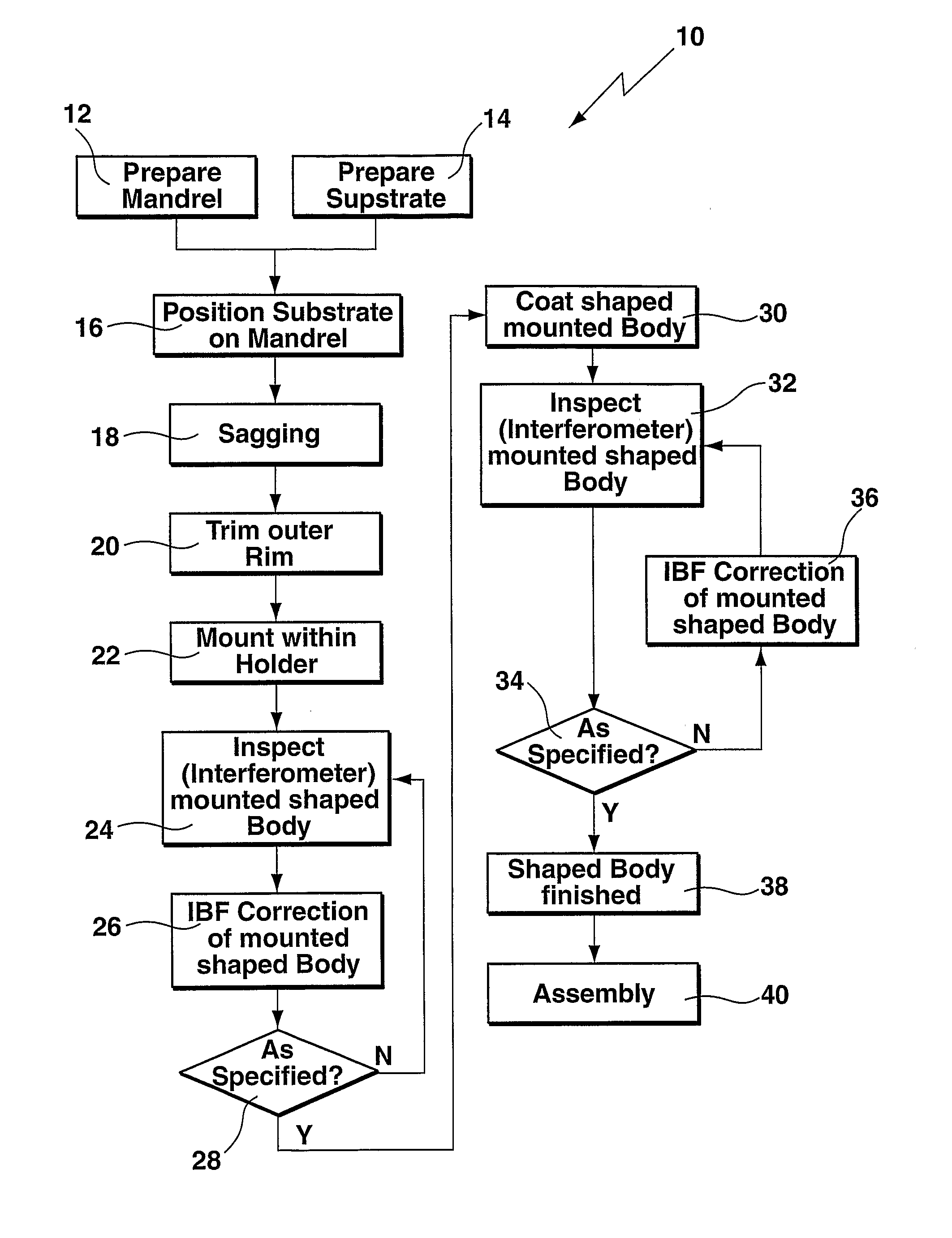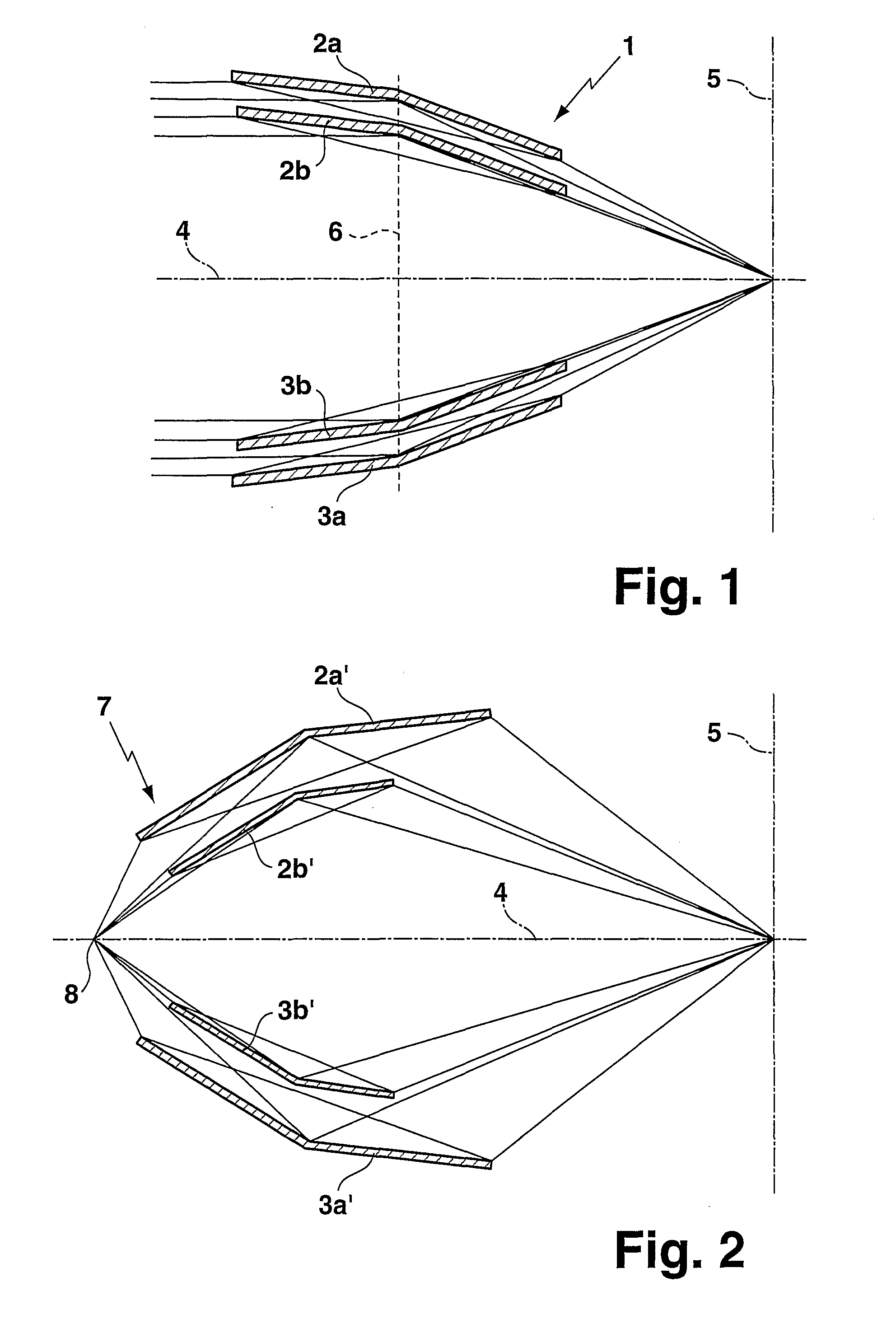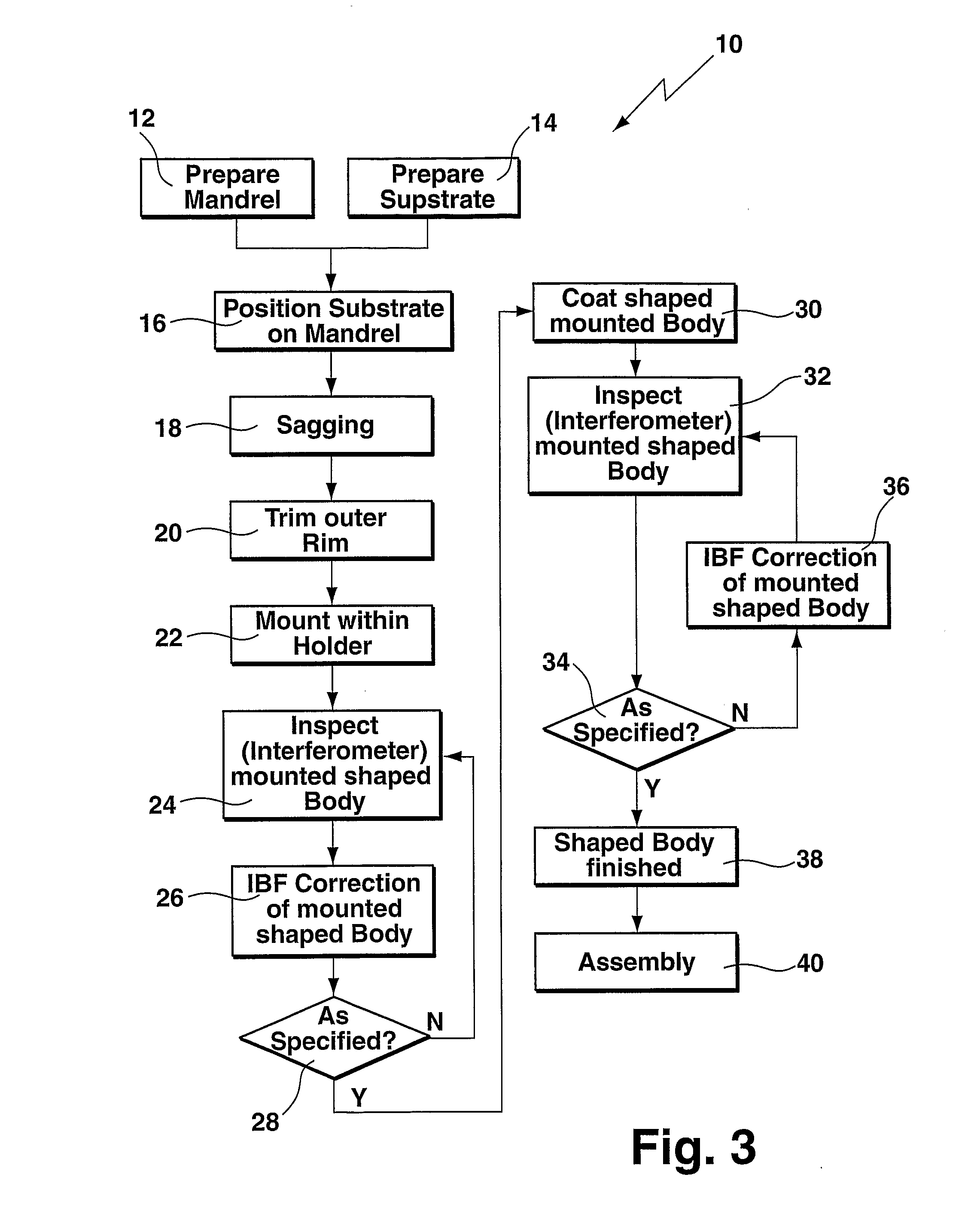High-Precision Optical Surface Prepared by Sagging from a Masterpiece
- Summary
- Abstract
- Description
- Claims
- Application Information
AI Technical Summary
Benefits of technology
Problems solved by technology
Method used
Image
Examples
Embodiment Construction
[0058]Various sagging tests were performed using different materials as a mandrel and also as a substrate. Alumina based ceramics, keatite glass ceramic (provided by Schott DESAG AG) and Zerodur® glass ceramic (provided by Schott Glas AG), stainless steel, SiC, Si3N4 were tested as a mandrel material. Substrate materials that are closely matched to the thermal expansion behavior of these mandrels are primarily borosilicate glasses.
[0059]The borosilicate glass D263 (provided by Schott) has a coefficient of thermal expansion (about 7·10−6 / K between 20 and 300° C.) matching an alumina based ceramic. Borofloat® (also provided by Schott) having a lower coefficient of thermal expansion (about 3·10−6 / K) can be used together with keatite mandrels (about 2·10−6 / K). Zerodur® has a coefficient of thermal expansion (on the order of 10−7 / K) which is considerably smaller than the one of all other materials in the relevant temperature range up to 600° C.
[0060]To effect sagging, the temperature was...
PUM
| Property | Measurement | Unit |
|---|---|---|
| Thickness | aaaaa | aaaaa |
| Thickness | aaaaa | aaaaa |
| Thickness | aaaaa | aaaaa |
Abstract
Description
Claims
Application Information
 Login to View More
Login to View More - R&D Engineer
- R&D Manager
- IP Professional
- Industry Leading Data Capabilities
- Powerful AI technology
- Patent DNA Extraction
Browse by: Latest US Patents, China's latest patents, Technical Efficacy Thesaurus, Application Domain, Technology Topic, Popular Technical Reports.
© 2024 PatSnap. All rights reserved.Legal|Privacy policy|Modern Slavery Act Transparency Statement|Sitemap|About US| Contact US: help@patsnap.com










